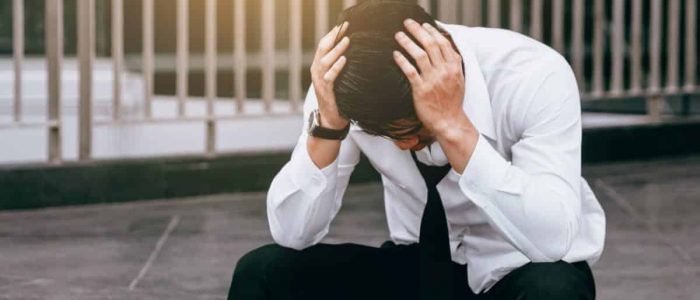Have you suffered what you think is a panic attack and want to make sure? What are the most common symptoms of panic attacks and how do you deal with them? What to do to prevent future panic attacks in a simple and effective way?
It is something that has happened to most people at some point in their life.
It all starts with a simple dizziness, the sensation of your heartbeat intensifies and, at times, breathing becomes difficult ... It seems that it is the end!
However, if you do not have heart problems, it is most likely a panic attack.
How do you know if it is a true panic attack?
Although today there are innovative solutions, such as the new virtual psychological instruments (where the popular panic crisis tests are found) that can be useful to detect the existence of a possible related underlying disorder, they cannot replace the diagnosis of A professional.
But in addition to visiting your doctor, you can understand what panic attacks are and how they arise, as they can almost always feel like heart attacks if you've never had one before.
Many times they arise without an apparent cause but, on other occasions, panic attacks manifest themselves while you are on the subway or in a stressful situation.
People prone to crisis or panic attacks can have one every few days, and have that feeling of the end of the world.
Among the symptoms of a panic attack are: excessive perspiration, tremors, dizziness, nausea, diarrhea or vomiting, flushing, nervousness, rapid heartbeat ...
How to stop a panic attack effectively?
It's hard to stay in control when you're having a panic attack.
However, it is best to speak with a therapist to help you understand the best techniques designed to calm the individual symptoms of a panic attack.
In the meantime, you can do the following:
Take a deep breath
Being aware of your breathing is one of the most powerful ways to control a panic attack.
When a person is in the middle of a crisis, their breathing tends to accelerate, which accelerates the heart rate and, consequently, dizziness and even fainting appear.
Do you remember seeing on television that when someone has a panic attack they use a paper bag?
This is a simple trick to trick your mind: thus focusing it on the breath, rather than on the panic attack.
You just have to pause for about three seconds between each breath to avoid hyperventilating.
Close your eyes
Feeling overwhelmed can be one of the triggers for your panic attacks.
If you are in a fast-paced environment with a multitude of stimuli, be aware that this can fuel your panic attacks.
To reduce it, you just need to close your eyes while going through one of these panic episodes. It is an easy way to block any additional stimuli and to be aware of your breathing.
Imagine yourself in a happy place
Just think of the most relaxing place in the world that you can imagine. The one you choose!
Visualize yourself there and try to focus on the details as much as you can. Just make sure to choose a quiet, calm and relaxing place, no matter how much you love the hustle and bustle in real life.
Repeat a mantra internally
Repeating a mantra internally can help you relax, and it can give you something to hold on to while going through a panic attack.
It can be a simple "This is going to happen" or one that you decide personally. Repeat this in a mental loop until you feel that the panic attack has disappeared.
Relax your muscles
Like mindful breathing, muscle relaxation techniques can help you stop your panic attack.
The process consists of consciously relaxing one muscle at a time, starting with something simple like the fingers of your hand and moving on to the rest of your body.
To maximize its effectiveness, it is recommended that you practice these techniques beforehand,
Face your fears
It is said that the most effective way to stop a panic attack is by facing your fears.
«How do I do that?" -you will ask yourself.
Well, for this you need to allow yourself to have panic attacks voluntarily so that you can desensitize yourself to the symptoms.
By inducing your own symptoms, the sense of control you have over the crisis and the accompanying feelings will help you avoid them in the future.
It's a matter of getting so used to those situations that trigger panic attacks that your body learns not to respond with the same symptoms.



